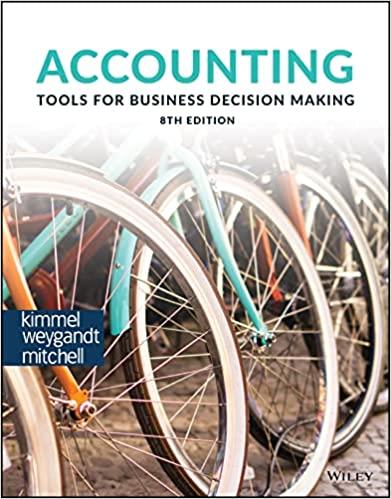Question
A common issue in accounting is regulations requiring additional disclosure (you can probably think of lots of examples off the top of your head). A
A common issue in accounting is regulations requiring additional disclosure (you can probably think of lots of examples off the top of your head). A common assumption in such discussions is that such disclosures would be costly for the firm and would only help the analyst save money (by effectively doing the analyst's job for them). This could be the basis for a reasonable argument against such mandatory disclosurewhy should the firm (i.e., the shareholders) spend money to help the analyst?
There are three agents: a manager, an analyst and a shareholder. The shareholder (who owns 100 percent of the firm) takes no action but receives the value of the firm at the end of the game. The total value of the firm at the start of the game is $10.
The manager has an opportunity to abuse their position to earn extra money from the firm (at a cost to the shareholder). The manager chooses the extent of this abuse (denote A), where A must be between zero and one (just to keep the math simple). Let A also equal the benefit to the manager. The abuse isn't necessarily fraud and isn't necessarily illegal, but it is costly to the shareholder. This could represent a reduction in research and development to make a bonus or a manager having the firm make a loan to him. Assume that the cost of A to the shareholder is 10 x A, i.e., the damage to the shareholder is much higher than the benefit to the manager. In the absence of an analyst, therefore, it should be clear that the manager will choose A = 1 and receive a payoff of $1, while the shareholder will receive a payoff of $1010 x $1 = $0.
The analyst's role is to figure out if the manager is abusing their power. To do so, the analyst exerts effort (E), which costs her E2. Again, restrict E to between zero and one. For a given amount of abuse and effort, there is a probability (p) that the analyst will detect the abuse, with p = A2E. Note that this is increasing in both A and E (which makes sense), that small increases in A lead to larger increases in the probability of getting caught (which also makes sense) and that increasing effort increases the cost to the analyst faster than it increases their results (i.e., there are diminishing returns to working hard). Finally, the probability of detection is zero if there is no abuse or if the analyst doesn't work at all, and the probability of detection is never greater than one. So, while this formula is somewhat arbitrary, it has properties that, I think, make a lot of sense.
If the analyst finds nothing (which occurs with probability 1 - p), then nothing happens. If the analyst uncovers the abuse (which occurs with probability p), then the manager suffers some lossperhaps they are fired, no longer trusted or their reputation suffers. Assume this loss equals four. If the analyst uncovers the abuse, her reputation is enhanced, and so she receives a benefit; assume the analyst's benefit is equal to two.
- In terms of A and E, what is the payout to each of the three agents?
- What is the equilibrium level of A and E in this setting? That is, find an A and an E such that the manager's choice of A is optimal given E, and the analyst's choice of E is optimal given A. Hint: you'll need some simple calculus to solve.
- How much does the shareholder lose in this equilibrium?
- Now assume that the FASB proposes a new rule to increase disclosure and make the analyst's job easier. It will, however, cost the firm (i.e., the shareholder) money to comply with (call this cost C). This could be increased disclosure around research and development or around related party transactions, etc. Assume that under the new rule everything is the same except that the analyst's costs are reduced from E2 to (E2) / 8. Find the new equilibrium. For what values of C (if any) would the shareholder want to implement the new rule, and for what values of C would the shareholder prefer not to implement the new rule?
- Referring to question 4, assuming that the new rule reduces the analyst's costs from E2 to E2 - 0.1.
- What does this tell us about our original question, "Why would the shareholder want to pay to help the analyst"?
Step by Step Solution
There are 3 Steps involved in it
Step: 1

Get Instant Access to Expert-Tailored Solutions
See step-by-step solutions with expert insights and AI powered tools for academic success
Step: 2

Step: 3

Ace Your Homework with AI
Get the answers you need in no time with our AI-driven, step-by-step assistance
Get Started


